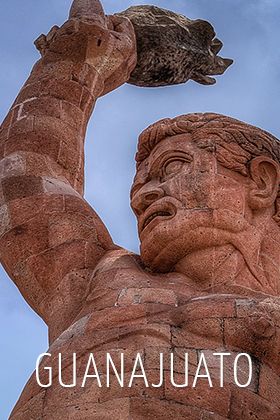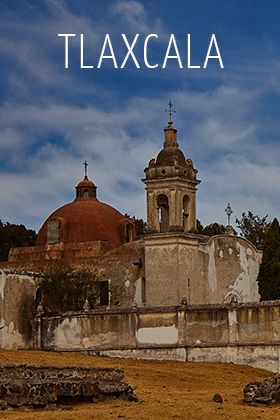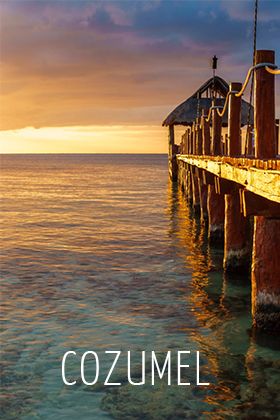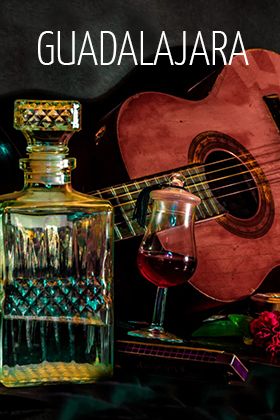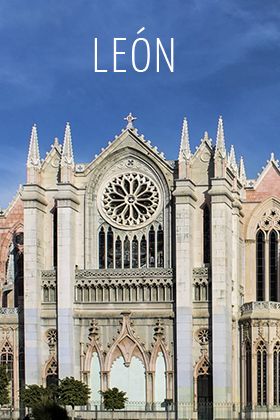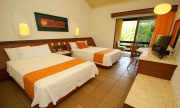Saltillo City
by: Travel by México

Saltillo City
by: Travel by México
Legend has it that it all started with a waterfall coming up from a spring that founded the city of Saltillo, Coahuila. This spring provided water to the population through the construction of a ditch and ever since the small waterfall has disappeared. Currently, the spring is gushing water, although the current has been tunneled.
At the top of the hill where the spring emerges, they built a church that hosts a crucified Christ known as the Santo Cristo del Ojo de Agua. Many parishioners attributed the presence of the spring, which seems to sprout from its base, to have miraculous properties. A few steps away from there is Plaza Mexico, where the American army encamped under the command of General Zachary Taylor before the confrontation with the Mexican troops commanded by General Antonio Lopez de Santa Anna in 1846 in the famous "Battle of Angostura”.
Down the road, following the route of the first settlers of the city is a sample of colonial architecture: the old Colegio de San Juan, now converted into the Museum of the Birds of Mexico, which permanently displays a major exhibition of Mexican birds. Toward the center of the city we find the Cathedral of Santiago, large and majestic, being one of the most beautiful architectural jewels of northern Mexico. On the other side is the Government Palace, whose facade of distinguished pink stone and exhibits the murals of Almaraz and Tarazona, which depict the most important events in the history of Coahuila. Surrounded by colonial buildings is the Plaza de Armas, where we see the facades of Coahuila Institute of Culture, the Casino de Saltillo, Campus de Juarez, and the Purcell House.
In the historical center is the Centro Cultural Vito Alessio Robles, located in a XVIII century building that shelters a library of over 13,000 volumes of the seventeenth to the nineteenth century. The Alameda Zaragoza, having a classical facade, is adorned with monuments and fountains, and whose back is an artificial lake that shows an image of the Mexican Republic, houses a public library inside. The architecture of the place is surrounded by the buildings of the City Hall, the Palace of Congress and the Court of Justice and the Teatro de la Ciudad "Fernando Soler". Further north are the city buildings Ateneo Fuente and the Technological Institute of Saltillo, among many others.
Be sure to visit the Parque Las Maravillas, which has extensive landscaping, playgrounds, plazas and fountains, making it the ideal setting for the presentation of national artists of great renown. Saltillo is a city of many charms, offering the tourist a wide variety of restaurants, bars, clubs and nightlife clubs which provide great entertainment. And not to be missed is the delicious roast beef accompanied by a cold beer! Nearby tourists can enjoy major attractions such as the Natural Park Sierra de Arteaga, located 54 kilometers from the city, where you can mountain bike, rappel, or enjoy a leisurely stroll. Among the abundant pines, cedars and oaks, they open a path to the canyons of Lilies, La Carbonera and Las Alazanas, crowning the area mountains of La Marta and La Viga.
Also nearby is the Monterreal Forest, a resort that takes advantage of the climate of the Sierra de Arteaga, where thanks to an artificial snow surface, you can go skiing on 45 trails at an altitude of 230 meters. Coming in from the Highway 40, just alittle more than 100 kilometers west of Saltillo, are the pools Light, Zapata and The Star, three sulfurous water spas in the town of Parras de la Fuente, which have BBQ grills, bathrooms, and showers, among other services, to provide comfort while enjoying a picnic in a safe environment. It is not possible to know exactly the exact origin of the city, but it is known that the Spanish conquistadors, led by Captain Alberto del Canto, founded the Villa de Santiago del Saltillo in 1577.
After the founding of the village there followed bloody battles with the Chichimeca people of the region who were well adapted to semi-desert environment and fierce fighters against the Spanish. They were led by warlords and Zapalinamé Cilavan, who in 1586 commanded the last Indigenous uprising.
The commander of the garrison of the place, Captain Francisco de Urdinola, managed to defeat the rebels in 1591 and founded the town of San Esteban de la Nueva Tlaxcala with 70 Tlaxcala families coming to the region at the invitation of the Viceroy Luis de Velasco to promote colonization. The life of the place changed radically with the arrival of Tlaxcala. Fields, previously used only for grazing, were filled with grain crops, cotton, vegetables and orchards. Large vineyards were planted that subsequently produced excellent wines and animal husbandry was improved. Looms and tanneries were established and they started to make the famous Saltillo blankets and ponchos, which, beyond being a tradition, were a symbol of the city. Also the crafts started to emerge consisting mainly of carved quarry stone and wood carving.
Under a booming economy and a large surplus production, people from other provinces arrived in Saltillo to stock up on provisions, which laid the foundation for the Saltillo Fair, which even exceeded the most commercially important cities of the colonial era, such as Acapulco, Jalapa or San Juan de los Lagos. Saltillo, a warm city both in climate and its people, has a wealth of history, culture and traditions, based on the activities of men and women who, for nearly 4 centuries, have placed their hopes and expectations in this wide valley surrounded by mountains. Visit Saltillo! The capital of Coahuila and unforgettable destination.




